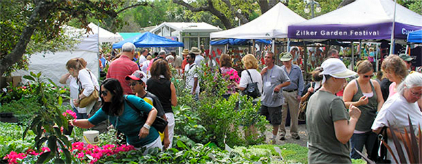Most folks know Thai lime leaf by its un-politically correct name,
kaffir leaf, or kaffir lime leaf. Other names for the citrus are combava,
limau purut, daun jeruk perut, makroot (makrut, magrood), chan sác,
wild lime, and kieffer lime.
The tree is native to Southeast Asia and Indochina and is commonly
used in most of those native cuisines. It should never, ever be called
kaffir lime.
Why is it offensive to use the word “kaffir”? Kaffir, kaffer, or kafir
originates in South Africa (and other African countries), and is an
offensive racial or ethnic slang for Blacks. The base of the word is
kafir, an Arabic word that means ‘disbeliever,’ ‘infidel,’ or ‘one
who conceals the truth.’
Thai lime leaf, a more descriptive and much less offensive term,
refers to the leaves and fruit of Citrus x hystrix, a thorny short
tropical tree with “double” leaves (the edge of the leaf forms a
figure eight when viewed from above) which have a citrusy, aromatic,
and floral-herbal quality. The leaves are used in all manner of S.E.
Asian cooking, in almost every category of dish.
The juice of the fruit is intensely astringent; too sour to use unless
it is heavily diluted and sweetened, but the same intense aroma
and flavor of the leaf permeates the rind of the fruit, which is prom-
inently used in Thai curry pastes and other regional seasoning pastes.
We are the most familiar with Thai lime leaf when used in Thai
cooking, particularly a couple of Thai soups: tom yum (hot and sour
Thai soup), and tom kha (coconut milk and galangal soup). Both
dishes feature a combination of Thai lime leaf and lemongrass, two
partners that live well together.
To use Thai lime leaf, remove the tough central rib. If the leaves
are primarily a seasoning, the de-stemmed whole leaf should be
muddled or crushed to release maximum flavor before adding
whole to the dish towards the end of the cooking process. In many
dishes the leaves are eaten directly after first being cut into a very
fine chiffonade or julienne, or being sliced and then pureed or
crushed in a mortar and pestle as part of an herbal spice mix.
Again, if added towards the end of the cooking process, the leaves
will retain more flavor and aroma. To use the rind for a garnish,
grate it very sparingly over the dish after plating, using a very fine
microplane zester. One tablespoon of zest from a Thai lime lime
is equivalent to about 6 Thai lime leaves. Fresh leaves are preferred,
frozen leaves are passable but not desirable, and dried leaves are
hardly worth the bother. If you have to use dried leaves, figure on
using twice the quantity of fresh, and it still won’t taste like it should.
For fresh leaves, which are incredibly expensive to purchase fresh
at the market, the best option is to grow your own. Thai lime trees
can handle temperatures down to around 38°F; they are rated as
Zone 9 to 10 plants. They require a pot with excellent drainage,
filled with a rich, fertile soil with a high humus content.
They are susceptible to root rot anyway, so stick them in a pot that’s
too large, and then over-water them, and you can expect them to
crater. If you can plant them in the ground, they can get quite large;
in a pot they tend to stay more restrained: 6 to 7 feet tall or so.
Ideally the small tree will get full sun most of the day and shade in
the afternoon, when the sun is the hottest.
Given enough water, they can grow in full sun in the tropics.
They begin to flower in the winter, bearing white fragrant blooms,
which are followed by small to medium-sized aromatic limes with
a very bumpy surface.
The potted tree can be kept outside, in a protected spot shielded from
winter winds and next to a masonry wall that absorbs heat during
the day and gives it off heat night.
When it gets in the high 30’s, either cover it securely to insulate the
plant (maybe with a light bulb burning inside the enclosure for extra
heat), or move it inside for temporary protection. Thai limes can be
susceptible to pests, especially spider mites and scale. Spraying with
refined or superfine horticultural oil (similar to dormant oil) usually
works well for both pests without affecting the quality of the leaves
or fruit. Happy gardening everyone! ❦
Mick Vann is a food writer, chef, restaurant consultant, horticulturist.
http://gustidude.blogspot.com
Thai lime is available at the nursery for $45 (5 gal.)







